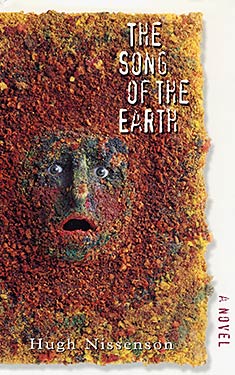Hugh Nissenson
Completed 5/24/2020,
Reviewed 5/24/2020
5 stars
This book
tells the story of a genetically engineered manual artist through interviews, correspondences,
and journal entries. By manual artist,
the author is differentiating from those who create digital art. The book includes black and white pictures as
well as thirteen color plates of the artist’s work. The art is interesting and evocative. The combination of words and art created an
emotionally charged book that I could barely put down. Though not usually a genre fiction writer, Nissenon
really captured a bleak future as well as a portrait of, well, an artist as a
young man. This book won the Gaylactic
Spectrum Award in 2002 and was nominated for an Otherwise Award (formerly the
James Tiptree, Jr. award)
The plot is
given away at the beginning of the book.
It is sort of a book with a book, as it’s written by a fictional art
journalist ten years after John Firth Baker is murdered at the age of nineteen. She recounts his life through the journal of
his mother, a pre-mortem interview with Baker himself, interviews with family,
friends and lovers, and correspondences with them. His mother, who lives in Nebraska, decides
she wants to have a child who is a manual artist. She goes to Japan to be artificially
inseminated with genetically enhanced DNA, which is illegal in the US. Of course, this must be kept a secret lest
she goes to jail and is heavily fined. The
child, Johnny, initially has a tough time with art, but eventually discovers
ways to communicate through drawings and collages. Like his mother, he is a gynarchist, in a
world torn apart by a war between the genders.
He meets up with a Gaian cult and longs to be the lover of the
leader. To do so, he must forsake his
art, which he does until his mother commits suicide. In response, he goes back to art to release
his inner demons. But his life is cut short
at the age of nineteen. After his death,
he achieves cult status as an artist inside and outside the Gaian cult he was a
member of.
I loved this
form. I thought it really worked well as
a method of biography. It’s reminiscent of
the journalistic form of World War Z by Max Brooks. It made for very quick reading and created a
sense of urgency to the book. The
urgency wasn’t derailed by the introduction giving away the whole plot. I found myself really engrossed in Johnny’s
development as an artist through his young and middle teen years. His mother had a mental illness which is also
documented by her journals. That made
for a very interesting and intense dynamic between the two. The form of the book also does well in
developing the characters as you get first and third person perspectives of
them.
This book is
very politically charged as it tackles issues with the environment, gender,
religion, and art. This is a near future
where global warming has caused the sea level to rise three feet. Many people live in domed “keeps” which are
climate controlled. Outside the keeps,
the temperature often reaches and stays over a hundred degrees. At the same time, there is basically a war
between the genders. The male patriarchy
has become more oppressive, and is currently trying to pass legislation to
allow polygamy. The government and the established
religions are against genetic manipulation in the US as well as in many other countries,
but people go to places like Japan and France in order to bear children who are
gifted, e.g. artistically or mathematically.
And there are new religions popping up, such as the Gaia Consciousness
cult that Johnny joins. The world
building is very effective and surprising for such a short book (about two
hundred forty pages).
I give this
book five stars out of five. I became emotionally
involved with the book and the character of Johnny, even when he was doing
things that irked me. I knew he was
going to die, but still got choked up when he was murdered. I think having the art accompany the book
also made for an emotional experience for me, as it was very creative and very
personal to the character. It’s very modern,
or perhaps post-modern, and it’s right up my alley for the types of art I appreciate. The combination of the art, the plot, and the
book’s form made for an interesting, deeply engrossing experience.

No comments:
Post a Comment